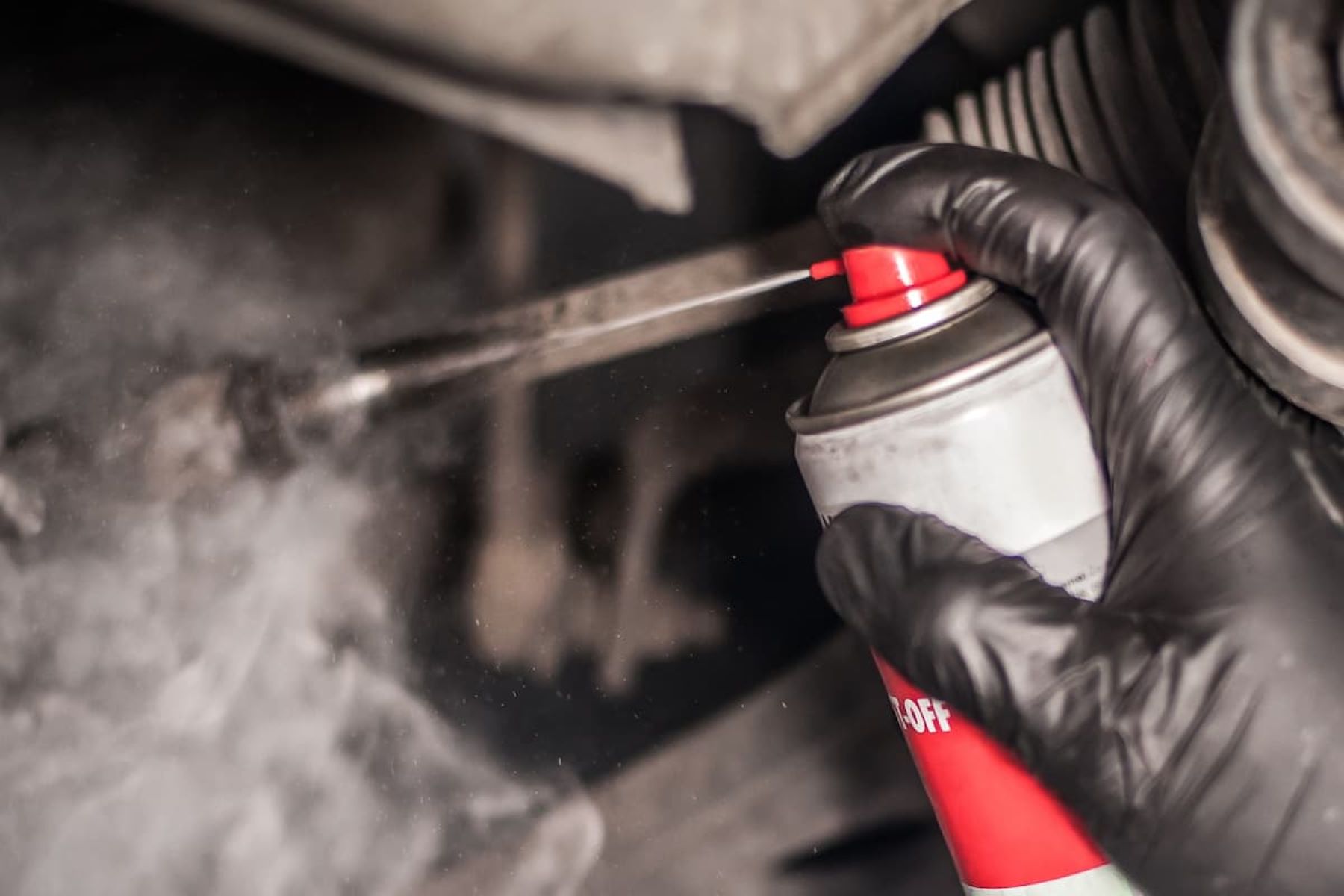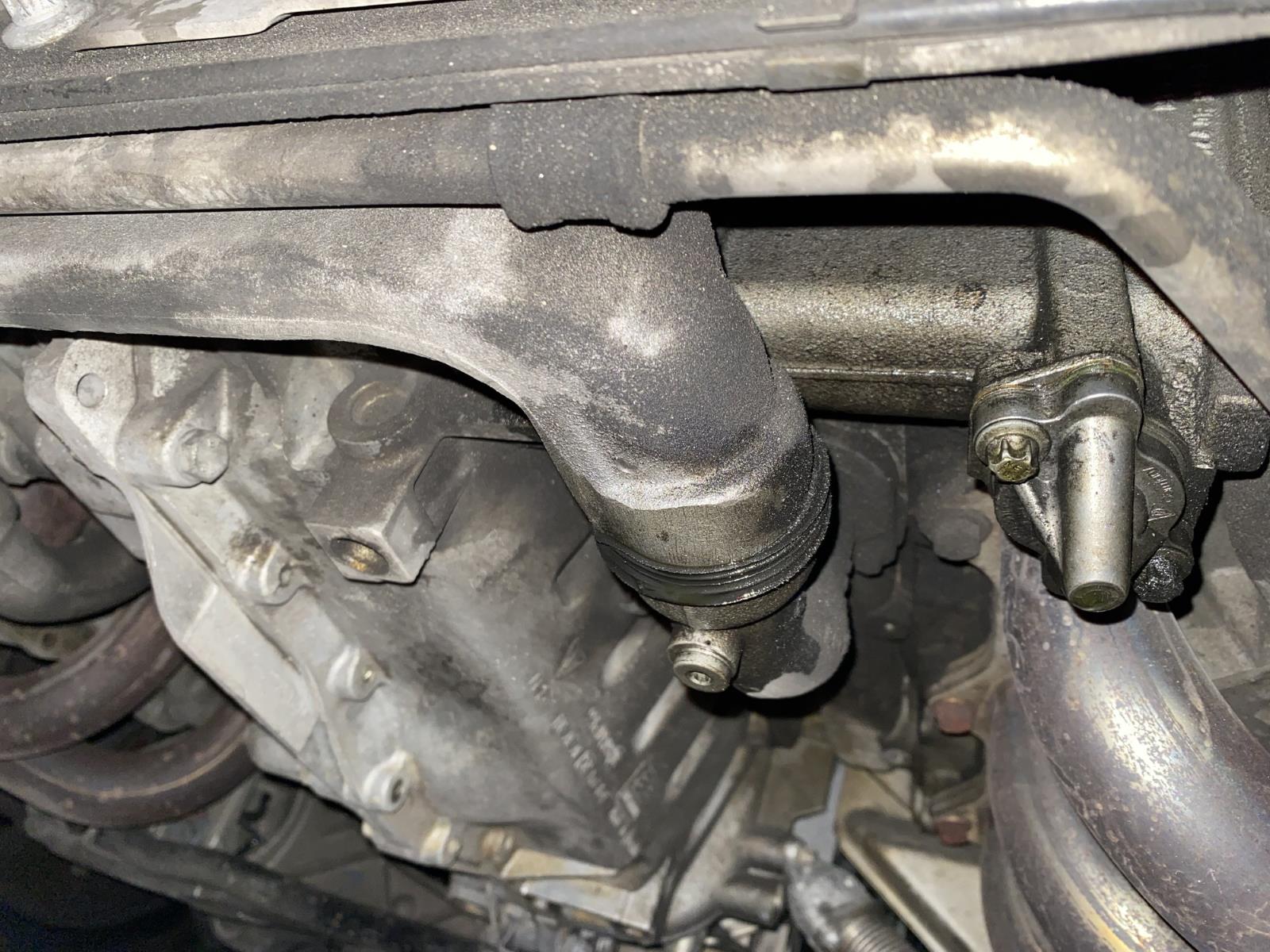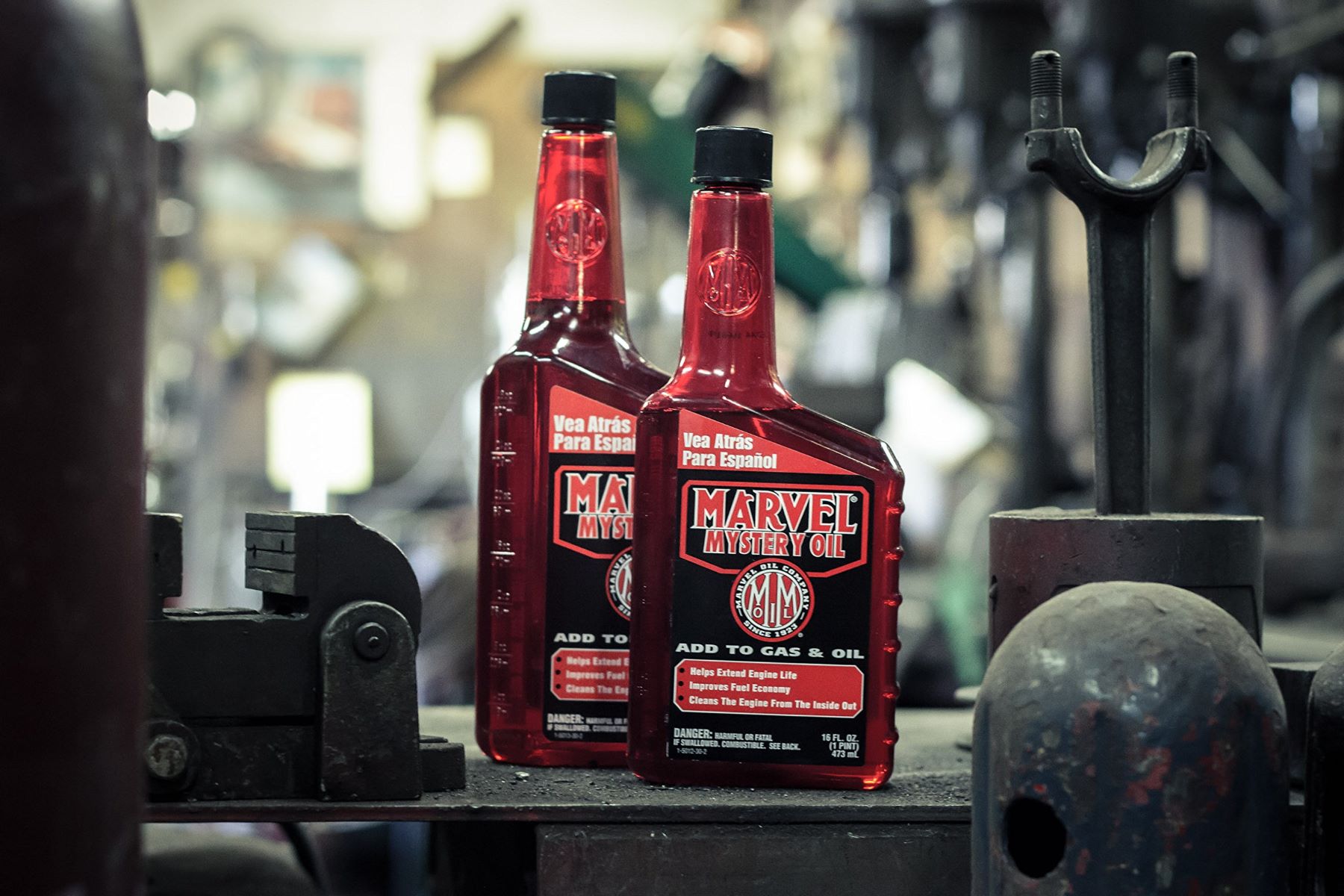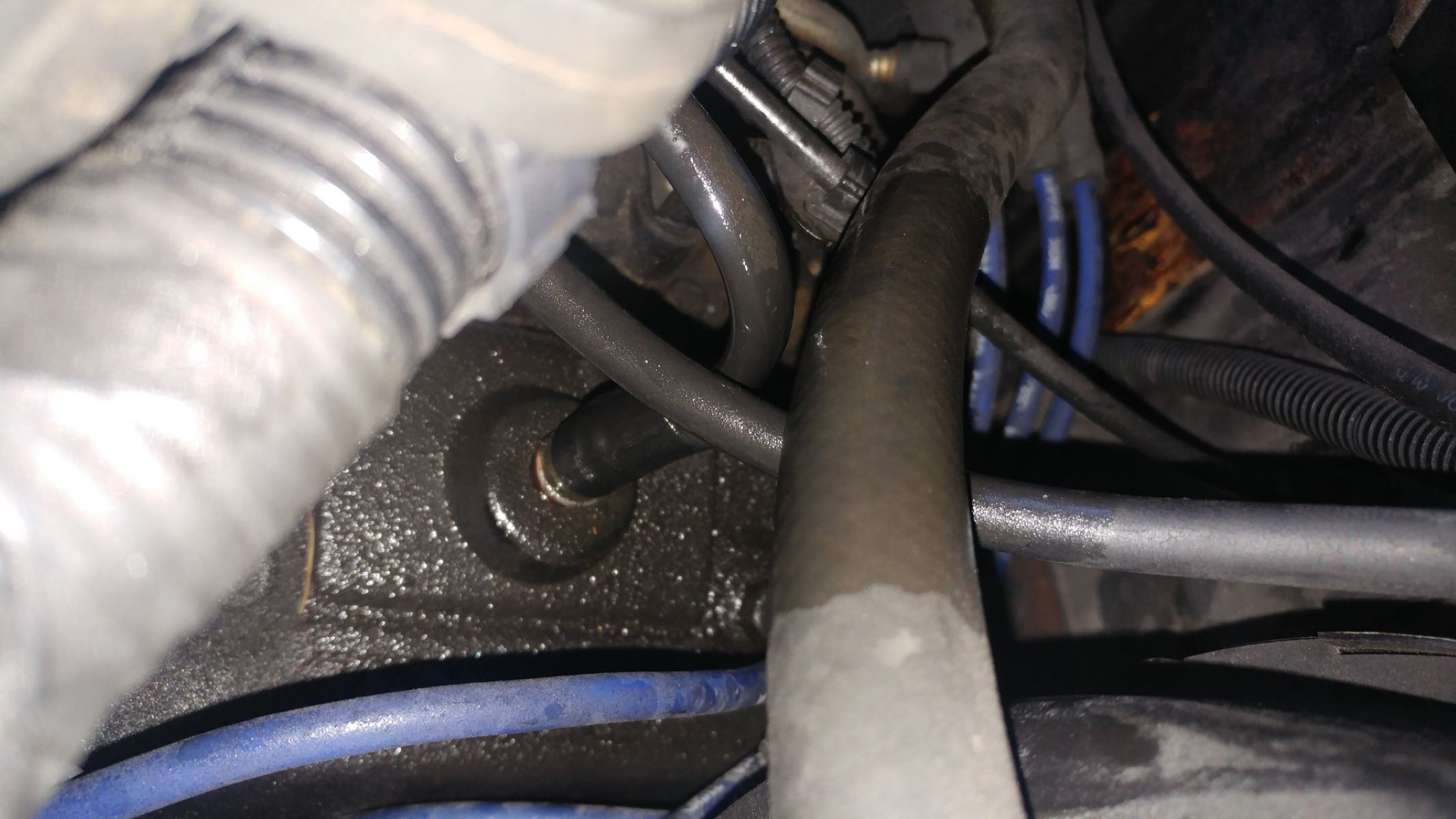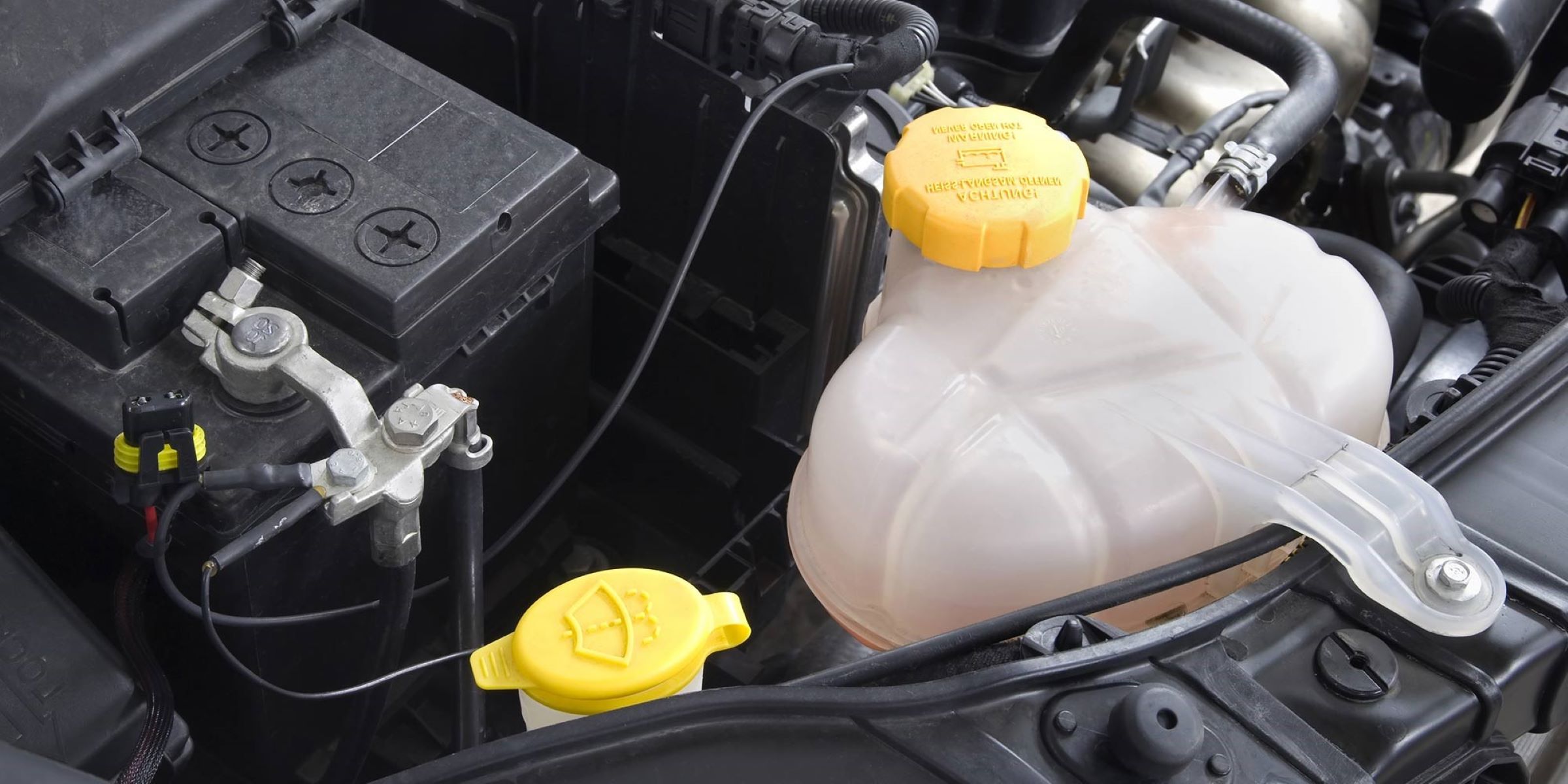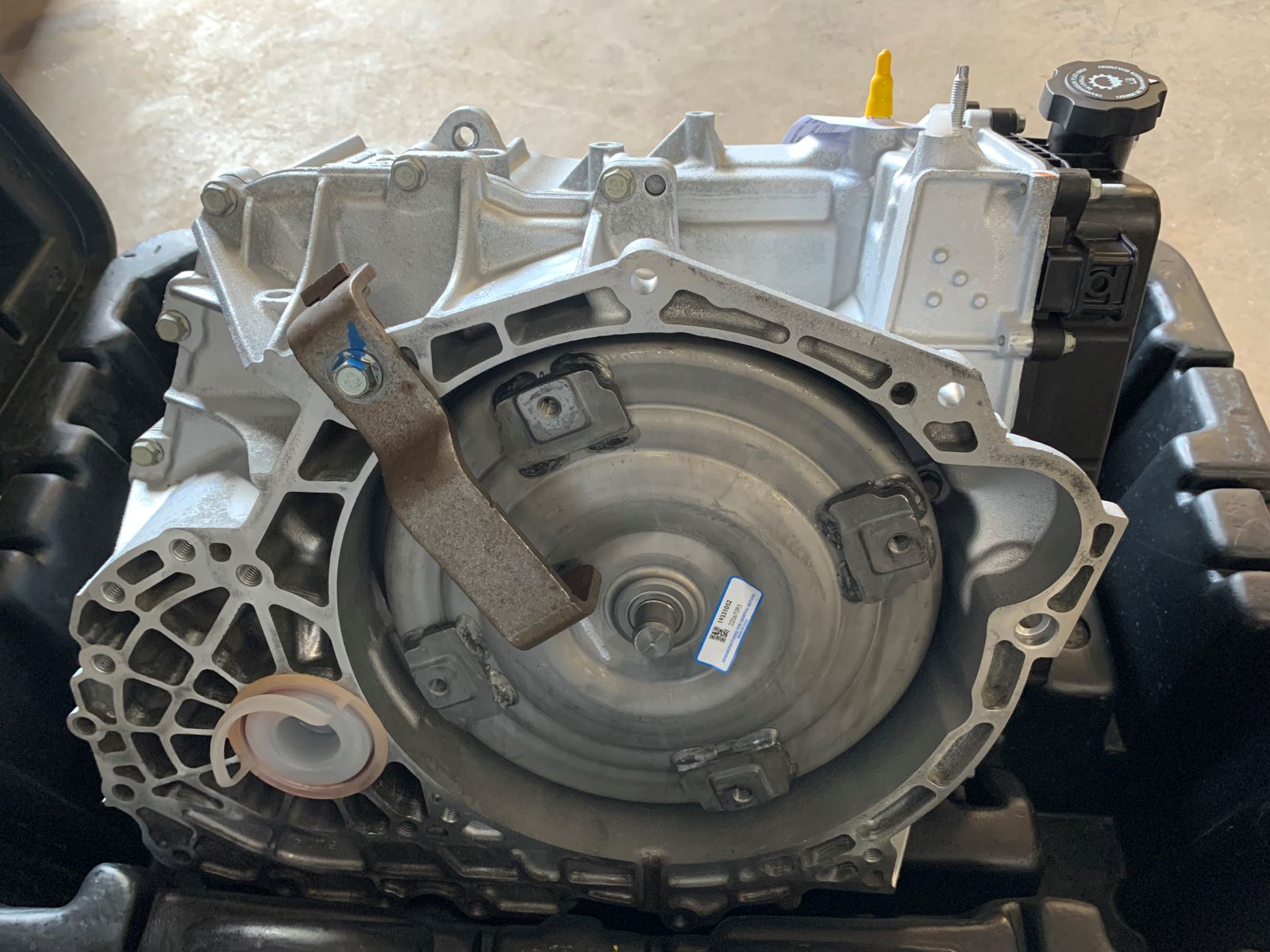Home>Automotive>The Surprising Consequences Of Overfilling Manual Transmission Fluid By A Quart
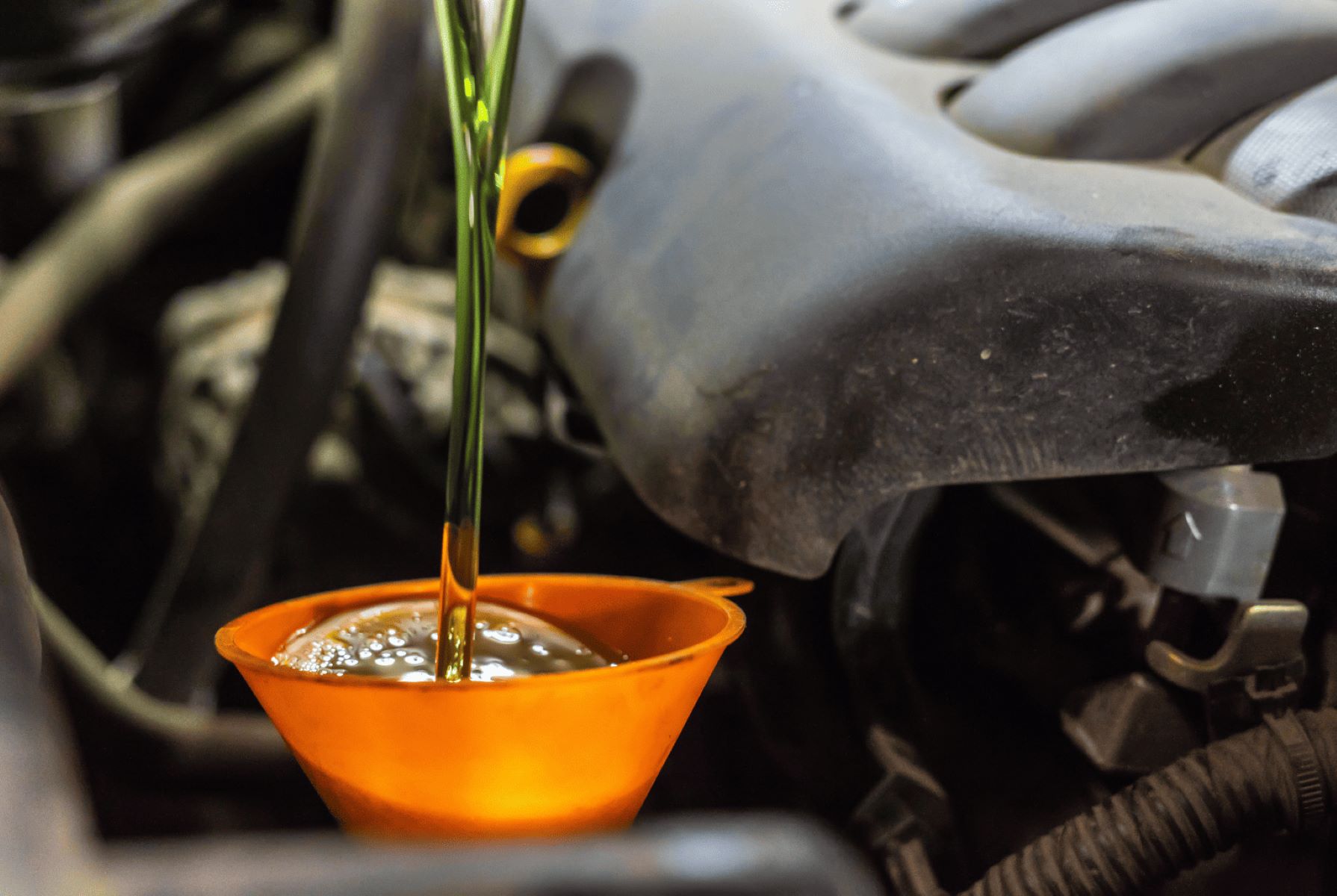

Automotive
The Surprising Consequences Of Overfilling Manual Transmission Fluid By A Quart
Published: January 5, 2024
Learn about the surprising consequences of overfilling manual transmission fluid by a quart in the automotive industry. Understand the potential damage and how to avoid it.
(Many of the links in this article redirect to a specific reviewed product. Your purchase of these products through affiliate links helps to generate commission for Regretless.com, at no extra cost. Learn more)
Table of Contents
Introduction
Maintaining the optimal fluid levels in your vehicle's manual transmission is crucial for its smooth operation and longevity. However, a common misconception among vehicle owners is that more is better when it comes to transmission fluid. In reality, overfilling the manual transmission fluid can lead to unexpected and potentially damaging consequences that are often overlooked.
Understanding the importance of proper manual transmission fluid levels and the potential risks associated with overfilling is essential for every vehicle owner. This article aims to shed light on the surprising consequences of overfilling manual transmission fluid by a quart, providing valuable insights into this often underestimated issue.
Let's delve into the intricate world of manual transmission fluid and uncover the lesser-known effects of overfilling, offering a deeper understanding of how this seemingly minor oversight can have significant implications for your vehicle's performance and longevity.
Understanding Manual Transmission Fluid
Manual transmission fluid serves as a crucial lubricant and coolant within the transmission system. Unlike automatic transmissions, which use a specific type of fluid, manual transmissions often require a different viscosity and composition of fluid. The primary function of manual transmission fluid is to facilitate smooth gear changes, reduce friction and wear on transmission components, and dissipate heat generated during operation.
The composition of manual transmission fluid typically includes base oils, additives, and in some cases, friction modifiers. These components work in harmony to ensure optimal performance and protection of the transmission system. The viscosity of the fluid is carefully formulated to provide the necessary lubrication for gears and bearings while allowing for seamless gear engagement and disengagement.
It is important to note that manual transmission fluid levels should be maintained within the manufacturer's recommended range. Overfilling the transmission with excessive fluid can disrupt the delicate balance within the system, leading to potential complications that may compromise the transmission's functionality.
Understanding the role of manual transmission fluid and its specific requirements for each vehicle is paramount. By adhering to the manufacturer's guidelines and ensuring the correct type and quantity of fluid is used, vehicle owners can safeguard their transmission system from avoidable issues, including the consequences of overfilling, which will be explored in the subsequent sections.
Consequences of Overfilling Manual Transmission Fluid
Overfilling the manual transmission fluid by even a quart can trigger a cascade of detrimental effects within the transmission system. The seemingly innocuous act of adding excess fluid can lead to a host of complications that may compromise the overall performance and longevity of the transmission. Understanding these consequences is paramount for every vehicle owner to grasp the potential risks associated with this common oversight.
One of the immediate repercussions of overfilling manual transmission fluid is the elevation of fluid pressure within the system. The excess fluid creates an imbalance, causing the pressure to surge beyond the intended operating parameters. This heightened pressure can place undue stress on the transmission components, leading to increased wear and potential damage to seals, gaskets, and other critical parts.
Furthermore, the overfilled fluid can aerate, leading to the formation of foam or air bubbles within the transmission. This foam can diminish the fluid's lubricating properties, resulting in inadequate protection for the gears and bearings. As a result, increased friction and heat generation can occur, further exacerbating wear on the transmission components.
The disruption caused by overfilling can also impact the transmission's ability to regulate temperature effectively. The excess fluid can impede the transmission's cooling capabilities, potentially leading to overheating. Elevated temperatures can accelerate fluid degradation and compromise the integrity of the transmission, increasing the likelihood of premature component failure.
Moreover, overfilling the transmission can lead to fluid leakage through the breather or seals. The excess pressure and foaming caused by the overfilled fluid can force the fluid past the seals, resulting in leaks that not only contribute to fluid loss but also pose a risk of contamination to other engine components.
In addition to these mechanical consequences, overfilling the manual transmission fluid can also affect the vehicle's drivability. The excess fluid can lead to erratic gear shifting, increased resistance in gear engagement, and potential clutch slippage. These issues can significantly impact the overall driving experience and may necessitate costly repairs to rectify.
Understanding the far-reaching implications of overfilling manual transmission fluid underscores the critical importance of adhering to the manufacturer's recommended fluid levels. By maintaining the correct fluid quantity, vehicle owners can mitigate the risk of encountering these detrimental consequences and safeguard the integrity of their transmission system.
Signs of Overfilled Transmission Fluid
Identifying the signs of overfilled transmission fluid is paramount for vehicle owners to promptly address this issue and prevent potential damage to the transmission system. While the consequences of overfilling manual transmission fluid can be severe, recognizing the warning signs can facilitate timely intervention and mitigate further complications. Here are the key indicators that may signal an overfilled transmission:
-
Fluid Leakage: One of the most apparent signs of overfilled transmission fluid is leakage. The excess pressure generated by the overfilled fluid can force the fluid past the seals, resulting in visible leaks around the transmission housing or breather. It is crucial to inspect the area beneath the vehicle for any signs of transmission fluid leakage, as addressing this issue promptly can prevent fluid loss and potential damage to surrounding components.
-
Foaming or Bubbling: Upon inspecting the transmission fluid dipstick, the presence of foam or air bubbles in the fluid can indicate overfilling. The excessive fluid can aerate, leading to the formation of foam within the transmission. This foaming diminishes the fluid's lubricating properties and can compromise the transmission's performance. If foaming is observed, it is imperative to address the overfilled fluid to restore the transmission's optimal functionality.
-
Transmission Overheating: An overfilled transmission may struggle to regulate temperature effectively, leading to overheating. Elevated temperatures can accelerate fluid degradation and compromise the integrity of the transmission components. If the vehicle exhibits signs of overheating, such as a burning smell or increased temperature gauge readings, it may indicate an issue with the transmission fluid level.
-
Erratic Gear Shifting: Overfilled transmission fluid can disrupt the gear shifting process, leading to erratic gear engagement and disengagement. Vehicle owners may notice difficulty in shifting gears, abrupt gear changes, or resistance during gear engagement. These irregularities in gear shifting can be indicative of an overfilled transmission and should be addressed promptly to prevent further complications.
-
Clutch Slippage: In manual transmission vehicles, overfilled fluid can lead to clutch slippage, where the clutch fails to engage properly, resulting in a loss of power transmission to the wheels. This can manifest as a noticeable decrease in acceleration, RPM fluctuations without corresponding speed changes, or a lack of responsiveness when accelerating. Addressing the overfilled fluid can help restore proper clutch functionality and drivability.
Recognizing these signs of overfilled transmission fluid empowers vehicle owners to take proactive measures to rectify the issue and prevent potential damage to the transmission system. By promptly addressing overfilled fluid levels, vehicle owners can safeguard the transmission's performance and longevity, ensuring a smooth and reliable driving experience.
Effects on Transmission Components
Overfilling manual transmission fluid can have profound and detrimental effects on the intricate components within the transmission system. The repercussions of excessive fluid levels extend beyond mere inconvenience, posing a significant risk to the transmission's functionality and longevity.
One of the primary areas impacted by overfilled transmission fluid is the transmission seals and gaskets. The heightened pressure resulting from excess fluid can exert undue stress on these critical components, leading to potential leaks and compromised sealing integrity. The continuous pressure on the seals can cause them to degrade prematurely, resulting in fluid leakage and potential contamination of surrounding engine components.
Furthermore, overfilled transmission fluid can adversely affect the transmission bearings and gears. The excessive fluid can lead to aerating and foaming, diminishing the fluid's lubricating properties. As a result, the gears and bearings may experience increased friction and wear, compromising their operational efficiency and longevity. The lack of adequate lubrication can accelerate wear on these components, leading to potential damage and necessitating costly repairs or replacements.
The transmission's synchronizers, responsible for facilitating smooth gear engagement, are also susceptible to the effects of overfilled fluid. The elevated pressure and compromised lubrication can impede the synchronizers' ability to function optimally, resulting in erratic gear shifting, increased resistance during gear engagement, and potential gear clash. These issues not only diminish the driving experience but also pose a risk of long-term damage to the transmission's internal components.
Moreover, the transmission's cooling capabilities can be compromised by overfilled fluid. The excess fluid impedes the transmission's ability to dissipate heat effectively, leading to elevated operating temperatures. High temperatures can accelerate fluid degradation and compromise the structural integrity of the transmission components, increasing the risk of premature failure and necessitating extensive repairs.
In addition, overfilled transmission fluid can impact the clutch assembly in manual transmission vehicles. The excess fluid can lead to clutch slippage, where the clutch fails to engage properly, resulting in a loss of power transmission to the wheels. This can manifest as a noticeable decrease in acceleration, RPM fluctuations without corresponding speed changes, or a lack of responsiveness when accelerating. Addressing the overfilled fluid is crucial to restore proper clutch functionality and prevent further damage to the clutch assembly.
Understanding the extensive effects of overfilled transmission fluid on the transmission components underscores the critical importance of maintaining the correct fluid levels. By adhering to the manufacturer's recommended fluid quantity, vehicle owners can mitigate the risk of encountering these detrimental consequences and preserve the integrity and longevity of their transmission system.
How to Fix Overfilled Transmission Fluid
Addressing an overfilled transmission fluid situation requires careful attention and precise corrective measures to restore the transmission system to its optimal functionality. The following steps outline the process of rectifying overfilled transmission fluid, ensuring the integrity and performance of the transmission system:
-
Drain Excess Fluid: The initial step in addressing overfilled transmission fluid involves draining the excess fluid from the system. This process requires precision to achieve the recommended fluid level. To begin, the vehicle must be positioned on a level surface, and the transmission fluid drain plug or pan must be located. It is essential to use the appropriate tools and safety precautions during the draining process to prevent spillage and ensure the safe disposal of the excess fluid.
-
Monitor Fluid Level: After draining the excess fluid, it is crucial to monitor the transmission fluid level to ensure it aligns with the manufacturer's recommended specifications. This can be achieved by utilizing the transmission fluid dipstick or level indicator, depending on the vehicle's specific configuration. Careful attention should be given to achieving the correct fluid level, as both underfilling and overfilling can have adverse effects on the transmission system.
-
Refill with Recommended Fluid: Once the correct fluid level is achieved, it is imperative to refill the transmission with the manufacturer's recommended fluid type and quantity. Using the specified transmission fluid is crucial to ensure optimal lubrication and performance of the transmission components. Vehicle owners should refer to the vehicle's manual or consult a certified mechanic to ascertain the precise fluid requirements for their specific transmission system.
-
Test Transmission Operation: Following the fluid correction process, it is essential to test the transmission system to ensure proper functionality. This involves starting the vehicle, allowing the transmission to warm up, and engaging the gears to verify smooth and precise gear shifts. Any irregularities in gear engagement or operation should be promptly addressed to prevent potential complications.
-
Professional Inspection: In instances where the overfilled transmission fluid has resulted in noticeable issues with the transmission's operation, seeking a professional inspection and assessment is advisable. A certified mechanic can conduct a comprehensive evaluation of the transmission system to identify any potential damage or irregularities resulting from the overfilled fluid. This professional assessment can aid in addressing any underlying issues and ensuring the transmission's long-term reliability.
By following these meticulous steps, vehicle owners can effectively rectify the consequences of overfilled transmission fluid, restoring the transmission system to its optimal state. Adhering to the manufacturer's recommended fluid levels and seeking professional guidance when necessary can safeguard the transmission's performance and longevity, ensuring a seamless and reliable driving experience.
Conclusion
In conclusion, the consequences of overfilling manual transmission fluid by a mere quart can have far-reaching and detrimental effects on the transmission system. Understanding the potential risks associated with this common oversight is paramount for every vehicle owner. The surprising repercussions of overfilled transmission fluid encompass mechanical complications, drivability issues, and adverse effects on critical transmission components.
Recognizing the signs of overfilled transmission fluid, including leakage, foaming, overheating, erratic gear shifting, and clutch slippage, empowers vehicle owners to take proactive measures to rectify the issue promptly. By promptly addressing overfilled fluid levels, vehicle owners can safeguard the transmission's performance and longevity, ensuring a smooth and reliable driving experience.
The effects of overfilled transmission fluid extend beyond mere inconvenience, posing a significant risk to the transmission's functionality and longevity. The heightened pressure resulting from excess fluid can exert undue stress on critical components, leading to potential leaks, compromised sealing integrity, and accelerated wear on bearings, gears, and synchronizers. Furthermore, the transmission's cooling capabilities can be compromised, leading to elevated temperatures and potential overheating.
Rectifying overfilled transmission fluid requires careful attention and precise corrective measures to restore the transmission system to its optimal functionality. Draining the excess fluid, monitoring the fluid level, refilling with the recommended fluid, testing transmission operation, and seeking professional inspection when necessary are essential steps in addressing overfilled transmission fluid.
By adhering to the manufacturer's recommended fluid levels and seeking professional guidance when necessary, vehicle owners can mitigate the risk of encountering detrimental consequences and preserve the integrity and longevity of their transmission system. Understanding the intricate dynamics of manual transmission fluid and the surprising consequences of overfilling underscores the critical importance of maintaining the correct fluid levels, ensuring the reliable performance and longevity of the transmission system.


